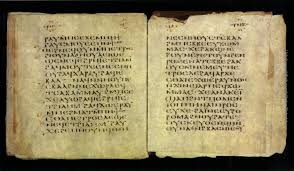CAN WE TRUST MATTHEW?
There are five crucial questions when we consider how reliable the Bible is.
1 Who wrote it? 2 How near to the events was it written? 3 Does the author intend to be truthful? 4 Is he actually truthful or does he let his prejudices get in the way. 5 What do other sources say?
1 Who wrote Matthew?
Despite the early tradition of the church, I think we can safely say that the apostle Matthew had nothing to do with the making of the gospel which bears his name, There is nothing that bears witness to a first hand experience. Instead, it is a compilation of a whole series of sources: Mark’s gospel, some written documents with the words of John the Baptist and some of Jesus; some oral traditions, probably Palestinian in origin etc.
The first obvious point about the author comes in the very first verse of the gospel: “Jesus Christ, son of David, son of Abraham”, repeated backwards at verse 17. It is the only verse in the New Testament which calls Jesus son of Abraham. It could only have been written by a Jewish convert to the Christian faith. Ten times he quotes from the prophets to show that Jesus’ story was foretold in the Old Testament.
Secondly, the writer wrote in polished Greek, with a markedly smooth style. Perhaps he lived in the Diaspora, i.e. outside Palestine. And he clearly had an organised mind. There are five blocks of Jesus’ teachings, each addressing a different subject: chapters 5-7 the Sermon on the Mount; 10 the mission; 13 parables of the kingdom; 18 the church; and 23-25 judgement and the end of the age.
The earliest tradition, c.130 AD, says, “Matthew composed the sayings in the Hebrew tongue.” But the gospel as we have it is written in pure Greek. It may be that the apostle wrote a collection of sayings which form part of our ‘Q’, a common source of sayings used by Matthew and Luke, or part of Matthew’s special material ‘M’.
Perhaps 13.52 is a self-portrait: Every scribe who has been trained for the kingdom of heaven is like the master of a household who brings out of his treasure what is new and what is old.”
.2 When was it written?
The answer is, we don’t know. It was certainly written before 100 AD because Bishop Ignatius of Antioch quotes it in his letters to 106-107 AD.
John Robinson in his book “Redating the New Testament” puts it around 60 AD. Most scholars guess it was written about 80 AD, but there are as good arguments for the former date as for the latter.
Don’t miss next week’s instalment: Does he tell the truth?
